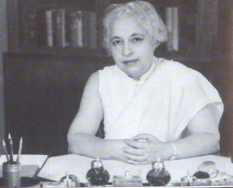skip to main |
skip to sidebar
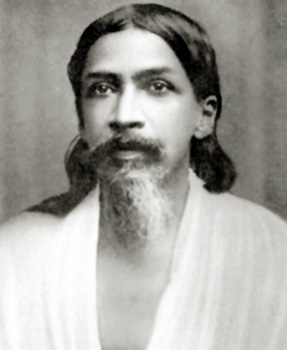 The Indian nationalist extremist leader, poet, and philosopher Aurobindo Ghose known also as Sri Aurobindo abandoned his radical political activities to develop a religious teaching for the spiritual benefit of all men.
Aurobindo Ghose was born in Calcutta, the third of six children. His father—of high-caste background—was a distinguished physician in the employ of the civil service, thoroughly Anglicized and a persuaded atheist. In 1879 Aurobindo was sent to England with his brothers for higher education to prepare for the Indian civil service. Though forced to live in near poverty, he excelled in his academic studies, especially in the classics, English literature, and European languages.
At King's College, Cambridge, Ghose joined an association of fellow Indians, expressing a deep interest in Indian nationalism. In 1893 he returned to India and resolved to strive for Indian independence. He served the maharaja of Baroda from 1893 to 1907, becoming successively professor of English, vice-principal at Baroda College, and finally principal of the National College of Calcutta.
During this period Ghose began to associate with radical Indian nationalists and revolutionaries, openly criticizing the Indian National Congress for its moderation, and founding a revolutionary newspaper so skillfully written that no pretext could be found for his arrest. However, in 1908 after a series of bombings he was arrested along with other suspects. Though he was acquitted soon after, it was during this short period that he became increasingly preoccupied with the spiritual dimensions of Indian cultural and corporate life.
Ghose experimented with Yoga, read extensively, and meditated on the Veda and Bhagavad Gita. In 1910 he openly abandoned active politics and went to the French settlement at Pondicherry, where he established the Aurobindo Ashram (retreat) to develop and promote his teaching, though he did not give up his interest in the political affairs of India. He was joined by his wife and a number of his friends—including several suspected revolutionaries—and remained continually under the surveillance of the English secret service. In 1914 he founded the magazine Arya, designed to promote his philosophical and religious teachings.
Ghose's basic spiritual goal was "to make the truth dynamic in the soul of man." For this he proposed an "integral Yoga" designed not for spiritual withdrawal from the world but for the purpose of transforming earthly human life "here in the individual and the community." Man must be opened to a supramental divine consciousness which can create a spiritual "superman" and a new order of life in the world, transforming moribund human institutions into "free forms" of strength, love, and justice. The emphasis of his teaching was on the spiritualization of the phenomenal world and all human activity through the emergence of a disciplined religious elite, extending widely to touch all mankind.
Among Ghose's writings published in English are The Yoga and Its Objects and Love and Death (both 1921), The Life Divine (1949), Essays on the Gita (1950), and The Message and Mission of Indian Culture and The Mind of Light (both 1953).
The Indian nationalist extremist leader, poet, and philosopher Aurobindo Ghose known also as Sri Aurobindo abandoned his radical political activities to develop a religious teaching for the spiritual benefit of all men.
Aurobindo Ghose was born in Calcutta, the third of six children. His father—of high-caste background—was a distinguished physician in the employ of the civil service, thoroughly Anglicized and a persuaded atheist. In 1879 Aurobindo was sent to England with his brothers for higher education to prepare for the Indian civil service. Though forced to live in near poverty, he excelled in his academic studies, especially in the classics, English literature, and European languages.
At King's College, Cambridge, Ghose joined an association of fellow Indians, expressing a deep interest in Indian nationalism. In 1893 he returned to India and resolved to strive for Indian independence. He served the maharaja of Baroda from 1893 to 1907, becoming successively professor of English, vice-principal at Baroda College, and finally principal of the National College of Calcutta.
During this period Ghose began to associate with radical Indian nationalists and revolutionaries, openly criticizing the Indian National Congress for its moderation, and founding a revolutionary newspaper so skillfully written that no pretext could be found for his arrest. However, in 1908 after a series of bombings he was arrested along with other suspects. Though he was acquitted soon after, it was during this short period that he became increasingly preoccupied with the spiritual dimensions of Indian cultural and corporate life.
Ghose experimented with Yoga, read extensively, and meditated on the Veda and Bhagavad Gita. In 1910 he openly abandoned active politics and went to the French settlement at Pondicherry, where he established the Aurobindo Ashram (retreat) to develop and promote his teaching, though he did not give up his interest in the political affairs of India. He was joined by his wife and a number of his friends—including several suspected revolutionaries—and remained continually under the surveillance of the English secret service. In 1914 he founded the magazine Arya, designed to promote his philosophical and religious teachings.
Ghose's basic spiritual goal was "to make the truth dynamic in the soul of man." For this he proposed an "integral Yoga" designed not for spiritual withdrawal from the world but for the purpose of transforming earthly human life "here in the individual and the community." Man must be opened to a supramental divine consciousness which can create a spiritual "superman" and a new order of life in the world, transforming moribund human institutions into "free forms" of strength, love, and justice. The emphasis of his teaching was on the spiritualization of the phenomenal world and all human activity through the emergence of a disciplined religious elite, extending widely to touch all mankind.
Among Ghose's writings published in English are The Yoga and Its Objects and Love and Death (both 1921), The Life Divine (1949), Essays on the Gita (1950), and The Message and Mission of Indian Culture and The Mind of Light (both 1953).
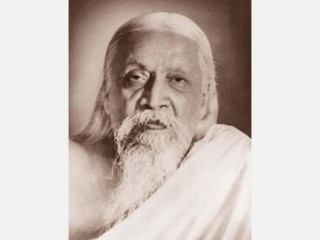


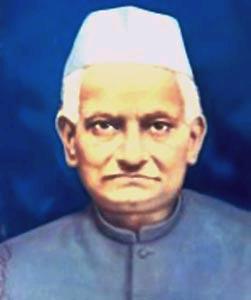 Elected as Congress President twice; formed Swaraj Party and was Leader of the Opposition in the Central Legislative Assembly; prepared a draft Constitution for India.
Elected as Congress President twice; formed Swaraj Party and was Leader of the Opposition in the Central Legislative Assembly; prepared a draft Constitution for India.
Motilal Nehru was a doyen of Indian freedom struggle. He was the patriarch of what later became modern India's most powerful political dynasty. He was one of the most brilliant lawyers of the pre-independence India. He was elected as Congress President twice and is famous as the father of India's first prime minister Jawaharlal Nehru. He was affectionately called as Pandit Motilal Nehru.
Motilal Nehru was born on May 6, 1861 in Delhi in a Kashmiri brahmin family. His father was Gangadhar and his mother was Jeevarani. Motilal Nehru's father died before Motilal was born. Moti Lal Nehru was brought up by his elder brother Nandalal who was a junior lawyer in Allahabad.
Motilal Nehru became one of the first generation of young Indians to receive 'Western-style' college education. He attended Muir College at Agra, but failed to appear for the final year B.A examinations. He then decided to join legal profession and appeared for law examination. Motilal Nehru secured first place in law examination and started his practice as lawyer in Kanpur in 1883.
Later Motilal Nehru settled in Allahabad and earned a mark for himself as one of the best lawyers of the country. He used to earns in lakhs every month and lived with great splendor and pomp. He bought a large family home in the Civil Lines of Allahabad and christened it as Anand Bhavan. He frequently visited Europe and adopted Western lifestyle. In 1909 he reached the pinnacle of his legal career by gaining the approval to appear in the Privy Council of Great Britain. In 1910, Motilal contested the election to the Legislative Assembly of the United Provinces and won.
The arrival of Mahatma Gandhi on Indian political scene transformed Motilal Nehru. Jalianwala Bagh massacre in Amritsar in 1919 shattered his faith in British rule and he decided to enter freedom struggle. The British government appointed a Commission to inquire into the Jalianwala Bagh incident. The Congress boycotted this commission. It appointed its own Inquiry Committee. Mahatma Gandhi, Motilal Nehru, Chittranjan Das were among its members. Following Mahatma Gandhi's call for Non Cooperation movement, he gave up his legal practice. He also shunned his luxurious lifestyle, gave away his Western clothes and articles and started wearing khadi.

Gradually Motilal also was dragged into politics. When Gokhale visited Allahabad in 1907 he was the guest of Motilal. When he gave a public lecture Motilal presided over it. When it was decided to convene a meeting of the moderates. Motilal had to take the chair Motilal criticized the Government in his speech. But his son in England felt that the criticism was very mild.
Lala Lajpat Roy, popularly known as the Lion of Punjab, was a great patriot. He was
arrested and sent to Mandalay by the British Government in 1907. This enraged both the father and the son. "Could we ever co-operate with such a government?" said the son. There was a good deal about Indian politics in the letters between the father and the son. The difference of opinion between the 18 - year-old son and the 48-year-old father were becoming sharp. Once about an article written by his father Jawaharlal wrote in his letter to him, had I not known you so very well, I would have thought this article had been written by a very loyal subject of the king."
"Boys should be boys" replied the father.
In 1910 Motilal contested the election to the Legislative Assembly of the United
Provinces and won. From the very first day he attended the Assembly session, he started questioning the decisions and policies of the government. "How many Police reporters sent by the Government to political meetings know short hand?" Questions of this sort would often embarrass the government. Motilal would fearlessly criticize the government in his speeches.
Some people started a journal called 'The Leader' to keep the public properly informed of all that was happening in the country. Madan Mohan Malaviya was its editor. The first Chairman of the Board of Directors was Motilal.
When the Simon Commission was appointed in 1927, Motilal Nehru was asked to draw up a draft constitution for free India. The constitution, drawn up by him, proposed Dominion status for India. The radical wing of the Congress led by Jawaharlal Nehru, and Subash Chandra Bose opposed Dominion status and favoured full freedom.
Motilal Nehru was arrested in 1930, in the wake of Civil Disobedience Movement. He was released in 1931, in view of his deteriorating health. Motilal Nehru passed away on February 6, 1931 in Lucknow.

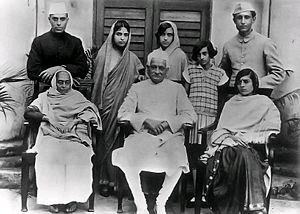
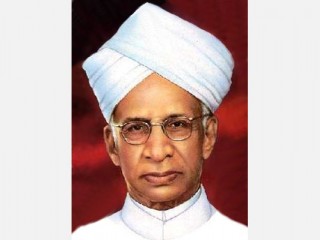

 Sarvepalli Radhakrishnan was born into a middle class family at Tirutani in Tamil Nadu, a town in Madras Presidency, British India, 64 km to northwest of Madras (now Chennai). His early years were spent in Tirutani and Tirupati. His father was a subordinate revenue official in the service of a local Zamindar (landlord). His primary education was at Primary Board High School at Tirutani. In 1896, he was shifted to Hermansburg Evangelical Lutheral Mission School at Tirupati.
Sarvepalli Radhakrishnan was born into a middle class family at Tirutani in Tamil Nadu, a town in Madras Presidency, British India, 64 km to northwest of Madras (now Chennai). His early years were spent in Tirutani and Tirupati. His father was a subordinate revenue official in the service of a local Zamindar (landlord). His primary education was at Primary Board High School at Tirutani. In 1896, he was shifted to Hermansburg Evangelical Lutheral Mission School at Tirupati.
Radhakrishnan went through most of his education on scholarships. He joined the Voorhee's College in Vellore but switched to the Madras Christian College at the age of 17. He graduated with a Master's degree in Philosophy from the Madras Christian College in 1906, being one of its most distinguished alumni. Radhakrishnan wrote his thesis for the M.A. degree on "The Ethics of the Vedanta and its Metaphysical Presuppositions". He was afraid that his M.A. thesis, "The Ethics of the Vedanta" would offend his philosophy professor, Dr. A.G. Hogg. Instead, Dr. Hogg commended Radhakrishnan on doing an excellent job. Radhakrishnan's M.A. thesis was published when he was only 20. Philosophy was not his personal choice, but seemingly an accident. A cousin of his who had graduated from the same college handed over to him the textbooks in philosophy. As Radhakrishnan was poor at this juncture of his life, this incident decided his future career. Later on he felt deep interest in his subject and wrote many acclaimed works on philosophy, both eastern and western.
Radhakrishnan was married to Sivakamu, a distant cousin, in 1904 at the age of 16. His bride was then only 10 years old. The marriage was a traditional Indian arranged marriage. They had five daughters and a son, Sarvepalli Gopal.
In 1914, in a strange twist of fate, Radhakrishnan met Srinivasa Ramanujan, the mathematical genius. Srinivasa was leaving for Cambridge for studies and had come to seek Radhakrishnan's blessings because a goddess came in his dream and told him to do so before undertaking the trip. The two never met again.
In 1918, Radhakrishnan was selected as Professor of Philosophy by the University of Mysore. By that time, he had written many articles for journals of repute like The Quest, Journal of Philosophy and the International Journal of Ethics. He completed his first book "The Philosophy of Rabindranath Tagore". He believed Tagore's philosophy to be the "genuine manifestation of the Indian spirit." Radhakrishnan's second book, "The Reign of Religion in Contemporary Philosophy" was published in 1920.
In 1921, he was appointed as a professor in philosophy to occupy the King George V Chair of Mental and Moral Science at the University of Calcutta. Radhakrishnan represented the University of Calcutta at the Congress of the Universities of the British Empire in June 1926 and the International Congress of Philosophy at Harvard University in September 1926. In 1929, Radhakrishnan was invited to take the post vacated by Principal J. Estlin Carpenter in Manchester College, Oxford. This gave him the opportunity to lecture to the students of the University of Oxford on Comparative Religion. For his services to education, he was knighted by the British Government in 1931, but did not use the title in personal life preferring instead his academic title 'Doctor'. He was the Vice-Chancellor of Andhra University from 1931 to 1936. In 1936, Radhakrishnan was named Spalding Professor of Eastern Religions and Ethics at the University of Oxford, and was elected a Fellow of All Souls College. In 1939, Pt. Madan Mohan Malaviya invited him to become Vice-Chancellor of Banaras Hindu University. He continued as its Vice-Chancellor till January, 1948. When India became independent in 1947, Radhakrishnan represented India at UNESCO, and was later Ambassador of India to the Soviet Union, from 1949 to 1952. He was also elected to the Constituent Assembly of India.
Radhakrishnan was elected as the first Vice President of India in 1952. In 1956, his wife Sivakamamma died. They were married for over 51 years. He was elected as the second President of India (1962-1967). When he became President, some of his students and friends requested him to allow them to celebrate his birthday, 5 September.
He replied, "Instead of celebrating my birthday, it would be my proud privilege if 5 September is observed as Teachers' Day".
His birthday has since been celebrated as Teachers' Day in India. Radhakrishnan along with Ghanshyam Das Birla and a few other Social Workers in pre independence era formed Krishnarpan Charity Trust.


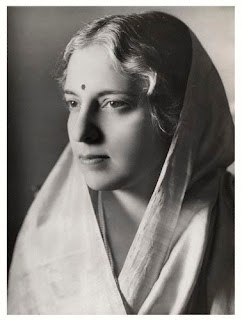
The sister of Pandit Jawaharlal Nehru, she was the first woman to become the President of the United Nations General Assembly. Well, we are talking about the well known diplomat Vijaya Lakshmi Nehru Pandit. She was an Indian envoy, who was born in the year 1900. In this article, we will present you with the biography of Vijayalakshmi Pandit, who was instrumental in the politics of the country.
In the year 1921, Vijaya Lakshmi Pandit married Ranjit Sitaram Pandit. She was the first woman to hold a prestigious position in the cabinet. In the year 1937, she was elected to the provincial legislature of the United Provinces and she became the minister of the local self governing body. She held this position for two consecutive years. Later, in the year 1946, she was reelected for this position. Read on to know the complete life history of Vijayalaxmi Nehru Pandit.
In the post independence period, she made an entry into the diplomatic services and served as the ambassador of India to various countries like Soviet Union, Ireland, United States and Mexico. From 1962 to 1964, she served as the governor of Maharashtra. Thereafter, she was elected to the Lok Sabha from Phulpur, which was the former constituency of her brother. She held the post for four years till 1968. Vijayalakshmi Pandit was critical about her niece, Indira Gandhi. Infact, their relations were not very good.
When Indira Gandhi became the Prime Minister in the year 1966, Vijaya Lakshmi Pandit took retirement from active politics. After taking voluntary retirement, she went to the peaceful Dehradun city. In the year 1979, she was chosen as the representative of India to the UN Human Rights Commission. Thereafter, she went far away from public life. She had an interest in writing. Her writings consist of The Evolution of India (1958) and The Scope of Happiness: A Personal Memoir (1979). Infact, her daughter named Nayantara Sahgal, is a wonderful novelist. Vijaylakshmi Pandit died in the year 1990.

